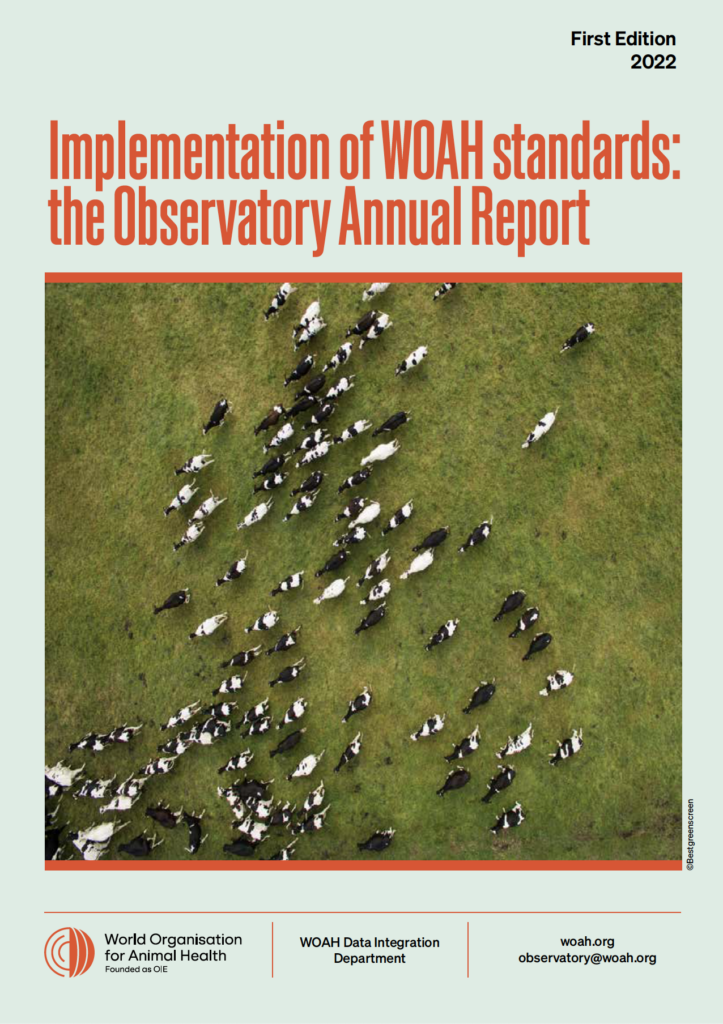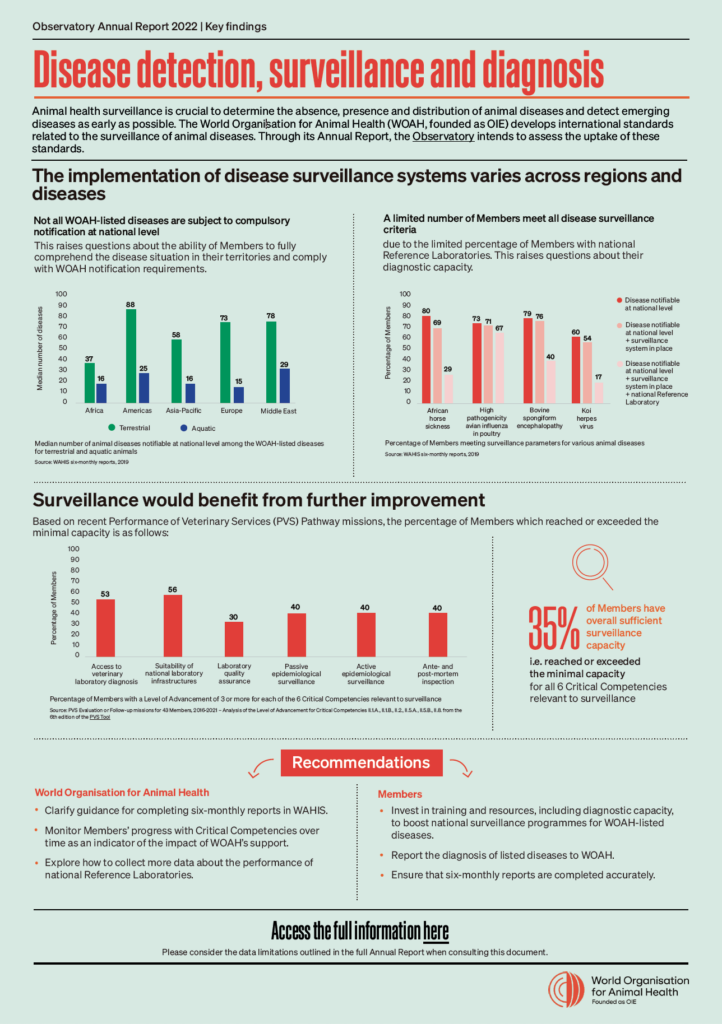Monitoring disease detection, surveillance and diagnosis
Animal health surveillance is crucial to determine the absence, presence and distribution of animal diseases and detect emerging diseases as early as possible. The World Organisation for Animal Health (WOAH) develops international standards related to the surveillance of animal diseases. Monitoring disease detection, surveillance and diagnosis can bring valuable insights for both WOAH and WOAH Members.

Through its Annual Report, the Observatory presents a global overview of the level of uptake of WOAH standards that relate to surveillance.
How can you access our surveillance analysis?
The surveillance dashboard presents the results of the analysis in an interactive way.
Errors in some of the original calculations were corrected in this dashboard after publication. This may result in slight discrepancies between the data in the dashboard and the 2022 report / factsheet which have not been corrected.
To discover the results of our surveillance analysis, access the full report as well as the one-page executive summary.

First Edition, 2022

Executive summary
How did we monitor the implementation of surveillance standards?
Monitoring the implementation of standards related to disease detection, surveillance and diagnosis requires building and analysing indicators using various data sources.
What surveillance indicators did we use to monitor the implementation of these standards?
Several indicators made it possible to monitor the implementation of standards related to surveillance, among them:
Number of diseases that are notifiable at national level per Member, amongst WOAH-listed diseases
Percentage of WOAH Members for which a given disease is notifiable by law at national level
Percentage of WOAH Members for which a given disease is notifiable by law at national level AND that have a surveillance system in place for that disease
Percentage of WOAH Members for which a given disease is notifiable by law at national level AND that have a surveillance system in place AND that have reported a National Reference Laboratory for that disease
Performance of Veterinary Services regarding surveillance, as assessed by the PVS Tool:
– Percentage of Members that have been assessed with a Level of Advancement of 3 or more for each of the six PVS Critical Competencies directly relevant to surveillance (II-1.A. Access to veterinary laboratory diagnosis, II-1.B. Suitability of national laboratory infrastructures, II-2. Laboratory quality assurance, II-5.A. Passive epidemiological surveillance, II-5.B. Active epidemiological surveillance, II-8.B. Ante and post-mortem inspection)
– Percentage of Members that have been assessed with a Level of Advancement of 3 or more for ALL the six PVS Critical Competencies directly relevant to surveillance (II-1.A&B, II.2, II-5.A&B, II-8.B)
What data sources did we use to build surveillance indicators?
Three main data sources made it possible to build the monitoring indicators:
List of notifiable diseases and surveillance systems: data extracted from WAHIS six-monthly reports submitted by Members (2005-2021)
Presence of a National Reference Laboratory for a given disease: data extracted from the 2019 WAHIS annual reports submitted by Members
Performance of Veterinary Services on surveillance: PVS dataset, as compiled and provided by the WOAH Capacity Building Department (2016-2021)
More on the topic
-
Observatory
The Observatory is a transversal programme that provides an overview of the uptake of international standards on animal health and welfare and veterinary public health by our Members. It contributes to the progressive improvement of their implementation as well as to the constant assessment of our corporate initiatives by providing valuable feedback and recommendations.Discover -
Animal Diseases
This portal gives easy access to resources and information on both terrestrial and aquatic animal diseases. WOAH defines “listed diseases” as a disease, infection or infestation listed in Chapter 1.3 of the Terrestrial and Aquatic Codes after adoption by the World Assembly of Delegates. The list of aquatic animal diseases and of the list terrestrial animal diseases are selected based on the criteria detailed in the Terrestrial Code and the Aquatic Code. Consult the internal procedures for the decision to add (or remove) pathogenic agents of terrestrial animals or aquatic animals to (or from) WOAH’s List. This portal gives access to all listed diseases as well as other additional important diseases not listed by WOAH, including several emerging diseases and more than 50 wildlife diseases which may have a serious impact on global health and can adversely affect wildlife conservation.Discover
